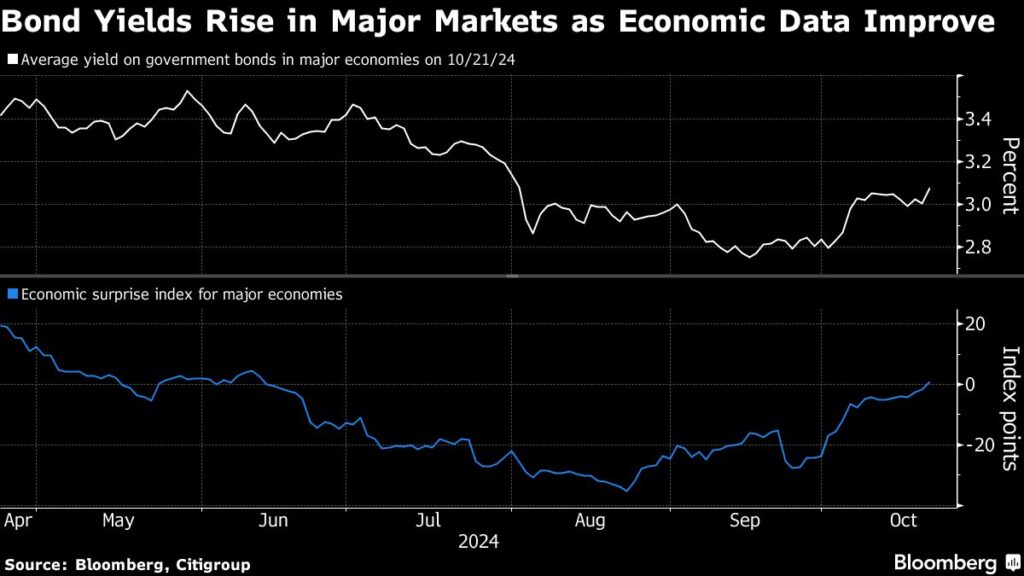Global bond markets are experiencing a significant downturn as investors reassess expectations regarding U.S. interest rates, particularly in light of a robust American economy. Following some steep losses, U.S. Treasury yields have surged, with the 10-year yield climbing back above 4.20% for the first time since July. This increase in yields was echoed in other markets, including Europe and Asia, where yields on German bonds and Australian securities also rose. At the core of this bond selloff is the changing outlook for U.S. monetary policy. Market participants are scaling back their predictions of aggressive interest rate easings, as recent comments from Federal Reserve officials have hinted at a more cautious approach to rate cuts.
Several market analysts suggest that the trend of increasing yields could continue into early next year, with predictions of U.S. 10-year yields potentially hitting around 4.5%. This sentiment is supported by rising oil prices and concerns surrounding potential fiscal deficits following the upcoming elections. As of now, U.S. 10-year yields have seen a significant uptick, contributing to increased volatility in the bond markets. The ICE BofA Move Index indicates that anticipated fluctuations in Treasury yields are at their highest level this year, underlining the growing uncertainty.
The reassessment of monetary policy is not confined to the U.S.; it’s impacting global markets as well. Trader expectations regarding the Reserve Bank of Australia’s monetary policy have shifted, with anticipated interest rate cuts reduced to about 50 basis points over the next year. Similarly, the Bank of Japan’s expected rate hike timeline has been pushed to June, reflecting a general move towards tightening monetary policy across numerous global central banks. In this evolving economic landscape, demand for long-term Japanese bonds may face challenges due to their significant interest rate risks.
Emerging markets are not immune to the selloff either. Countries like Indonesia are also witnessing rising yields in their bond markets. However, there are mixed sentiments about the intensity of this selloff. Some analysts believe that central banks, including the Federal Reserve and the Reserve Bank of New Zealand, could maintain support for bonds during their respective rate-cutting cycles. This could provide a counterbalance to the current negative trends in the market, suggesting that the bond market is not universally bearish.
In the near-term, market fluctuations may be exacerbated by various factors, including considerations surrounding U.S. debt supply and hedging strategies linked to upcoming elections. The potential outcomes of these elections, particularly fears of a “red sweep” by Republican candidates, could lead to further volatility in the Treasury market. Some investment firms, like BlackRock, are recommending reduced exposure to shorter-maturity Treasuries, influenced by their belief that Fed rate cuts will not be as steep as many market participants expect. They highlight long-term concerns over inflation, an aging workforce, and structural changes in the economy.
Overall, while certain analysts anticipate a correction or potential rallying in the bond markets—fueled by geopolitical risks or election developments—others predict a more prolonged period of increasing yields. This divergence reflects the complex interplay of economic indicators, monetary policy shifts, and global uncertainties, which are likely to keep investors on edge as they navigate the evolving landscape of bond investments.

